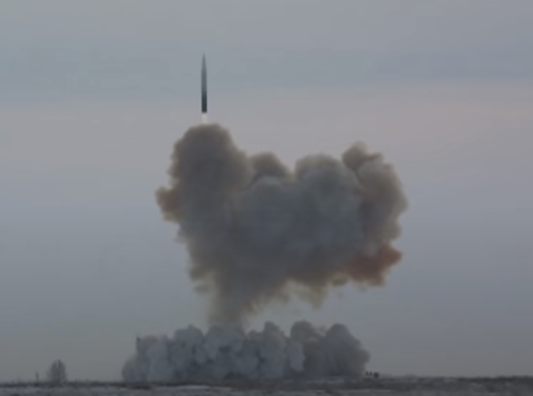 This issue of Science & Global Security covers three disparate topics reflecting very different concerns about the future of global security. The first article seeks to understand the performance of uncrewed aerial vehicles (UAV) which are emerging as a potent weapon and reconnaissance tool in a variety of conflicts and are now increasingly within reach of many states and some non-state groups. The second article explores the capabilities of hypersonic glide vehicles with intercontinental range potentially capable of carrying nuclear weapons, and now often portrayed as capable of radically changing the nature of strategic competition among leading military powers. The final article surveys the global stock of separated plutonium, the fissile material used by the first ever nuclear explosion (the Trinity test by the United States in July 1945) and estimates how much larger this stock could be 20 years hence. On all three issues, new policy initiatives will be needed to restrain the dangers identified.
This issue of Science & Global Security covers three disparate topics reflecting very different concerns about the future of global security. The first article seeks to understand the performance of uncrewed aerial vehicles (UAV) which are emerging as a potent weapon and reconnaissance tool in a variety of conflicts and are now increasingly within reach of many states and some non-state groups. The second article explores the capabilities of hypersonic glide vehicles with intercontinental range potentially capable of carrying nuclear weapons, and now often portrayed as capable of radically changing the nature of strategic competition among leading military powers. The final article surveys the global stock of separated plutonium, the fissile material used by the first ever nuclear explosion (the Trinity test by the United States in July 1945) and estimates how much larger this stock could be 20 years hence. On all three issues, new policy initiatives will be needed to restrain the dangers identified.
In their article "Flight Performance Analysis of the Samad Attack Drones Operated by Houthi Armed Forces" Mark Voskuijl , Thomas Dekkers and Ralph Savelsberg look at the attacks in 2019 Saudi Arabia's oil installations, which involved a total of tens of uncrewed aerial vehicles (UAVs) and some land-attack cruise missiles, to assess the Samad family of UAVs used by Ansar Allah, the Yemen-based Houthi movement under attack by Saudi Arabia with support from the United States. The authors apply the methods used in aircraft design to reconstruct key characteristics of the Samad vehicles and then use their model to simulate the flight profile that would have been used in an attack launched from the territory held by Houthi armed forces. This analysis takes into account the aircraft performance as well as weather conditions along the route. It suggests that the attacked oil fields were out of reach of the shorter-range Samad-2 vehicle, but were within the more than 1800 km range of the Samad-3 UAV. The approach developed by the authors could be used to evaluate performance of other uncrewed aerial vehicles with a view to international agreement on restrictions.
In their article "Modelling the Performance of Hypersonic Boost-Glide Missiles" (Free PDF) Cameron L. Tracy and David Wright present a model of a hypersonic glide vehicle able to travel at more than five times the speed of sound through the atmosphere over intercontinental distances, maneuver, and carry a warhead, and use it to evaluate various claims about the performance of these gliders. These systems are under development by the United States, Russia, China, France, and India. The analysis demonstrates that in most cases the hypersonic boost-glide systems do not offer a significant advantage over traditional ballistic missiles. Even though these gliders can reach their targets faster than missiles on minimum-energy trajectories, they travel more slowly than intercontinental ballistic missiles on depressed trajectories. And while a relatively low-flying glider can evade detection by radars, it would be visible to early warning satellites during most of their flight. Looking at the United States, the authors also consider the reasons the false claims and misperceptions of hypersonic weapons performance persist, arguing that social processes involving institutional interests, limited independent technical expertise, and a security argument enabling legislative and budgetary system together lead to governmental, scholarly, and media discourse in support for these programs. A policy initiative to limit the arms race dynamics inherent in such a situation will face many challenges.
The third article in the issue, "Global Stocks of Separated Plutonium: Stalled on the Path to Elimination" by Frank N. von Hippel and Masafumi Takubo deals with the accumulation of separated plutonium. The organizations invested in the development of the plutonium economy have over decades invested considerable effort in creating political demand for the technology. However, as von Hippel and Takubo show, attempts to build a commercially viable plutonium-based nuclear cycle have largely failed, leaving behind about 300 tons of plutonium produced by civilian programs. This is in addition to up to 150 tons of plutonium produced for weapons. As the authors show, both civilian and military stock are likely to grow in the coming years, with global civilian plutonium stocks possibly seeing a 50-percent increase by 2040, dramatically increasing the amount of this dangerous weapon-usable material in the world. An agreement to ban the production of plutonium for any purpose, military or civilian, could forestall such a future.
Image: Test of the Avangard system that includes a hypersonic glider vehicle. Dombarovskiy missile division, Russia, 26 December 2018. Source: TV Zvezda.
